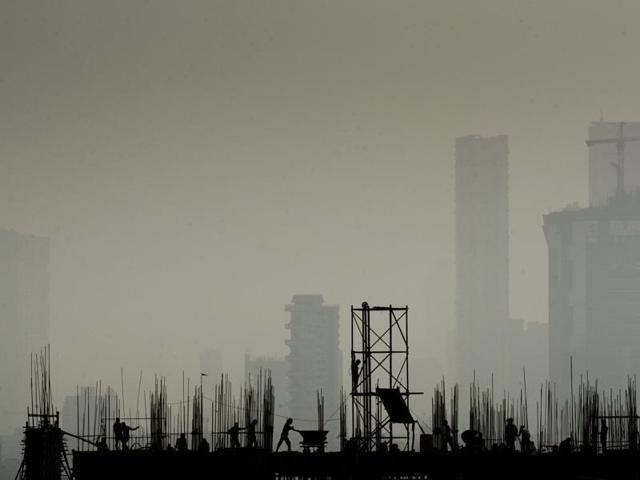Pollution monitoring in Mumbai not up to the mark, says study
Currently, Mumbai has two manual air monitoring stations. Only one of the four real-time monitoring stations is in operation and has recorded AQI for just 80 days between January 2016 and March 2016
Even as Mumbaiites have suffered from poor air quality in the past few months, the city along with Pune and Jaipur have minimal air quality monitoring and management. A 10-city rapid assessment by Delhi-based Centre for Science and Environment (CSE) has revealed that Mumbai is among the two cities with the least number of manual and real-time air monitoring stations, the lowest being Pune. The analysis by CSE was done on the basis of data from the Central Pollution Control Board (CPCB).

At present, Mumbai has two manual air monitoring stations. Worse, only one of the four real-time monitoring stations is in operation and has recorded air quality index (AQI) for just 80 days between January 2016 and March 2016.
“Mumbai is very deficient in monitoring air quality and needs more stations at various locations. If data is deficient, how will a policy to improve air quality get formulated? Mapping air quality across the city is critical so that data and health alerts can be disseminated to the public,” said Anumita Roychowdhury, executive director, research and advocacy, and head of the air pollution and clean transportation programme, CSE. “When we went around the city with our instruments, exposure on the roads was far higher than in ambient air. Congestion increases travel time, which further results in high exposure.”
Overall, the analysis showed that Mumbai, Delhi, Chennai, Hyderabad used only 25% (Mumbai) to 40% (Chennai and Hyderabad) of their real-time station capacity for reporting AQI over the past three months. With 4 out of 11 operational real-time monitoring stations, at 36%, Delhi recorded AQI for 78 days, while four out of five similar stations in Bangalore recorded AQI for 69 days, topping the list at 80%.
“The central pollution control board is likely to install three more real-time monitoring stations in the city [Mumbai]. In addition to this, we are also working on an action plan to improve the city’s air quality and bring down levels of respirable suspended particulate matter and oxides of nitrogen,” said an official from the Maharashtra Pollution Control Board (MPCB).
At present, air quality data takes into account readings that are only measured by two manual monitoring stations at Bandra and Sion and not through real-time ones, which according to researchers misrepresents the actual extent of air pollution.
“Although all cities have a combination of manual and real-time monitoring, there is an underestimation of the problem since air quality data is taken only from the manual monitoring system,” said Roychowdhury at the Conclave — Our Right to Clean Air: Enabling city action plan for clean air. “We’ve shown how manual monitoring method underestimates pollution.”
The CSE audit found 28% difference in average PM10 (particulate matter less than 10 microns) levels and 21% difference in nitrogen dioxide (NO2) emissions in Delhi between 2011 and 2014, when both pollutants were measured through manual and real-time monitoring systems, respectively.
So while manual monitoring showed PM10 at 224ug/m3, real-time monitoring showed 331ug/m3. Likewise, the difference in the emission levels from the two systems for N02 was 61ug/m3 and 77ug/m3. “The central pollution control board and state pollution control boards should also process real-time data and publish,” said the study.
However, all hope is not lost for Mumbai, which is on top of the list along with Kolkata on the use of public transport, walking and cycling. According to the analysis, 87% Mumbaiites use public transport and non-motorised transport — this despite a 95% increase in vehicles between 2003 and 2013. Also, 25.4% of the total fleet in Mumbai runs on Compressed Natural Gas (CNG) and Liquefied Petroleum Gas (LPG) as compared to only 9.1% in Delhi.
“Mumbai needs to celebrate the fact that only 12% use personal transport and two wheelers, and therefore should not neglect but rather recognise and build on that strength. But, new infrastructure decisions and planning such as skywalks is undermining that advantage,” said Roychowdhury.
The analysis also found that unlike Delhi and Ahmedabad, Mumbai which generates 2,500 tonnes per day of construction and demolition waste, has no recycling facility. With the lowest parking charges in the world, the assessment stated that “unlimited and free parking incites more car ownership and usage that cause more pollution”.
Stay updated with all the Breaking News and Latest News from Mumbai. Click here for comprehensive coverage of top Cities including Bengaluru, Delhi, Hyderabad, and more across India along with Stay informed on the latest happenings in World News.
Stay updated with all the Breaking News and Latest News from Mumbai. Click here for comprehensive coverage of top Cities including Bengaluru, Delhi, Hyderabad, and more across India along with Stay informed on the latest happenings in World News.





